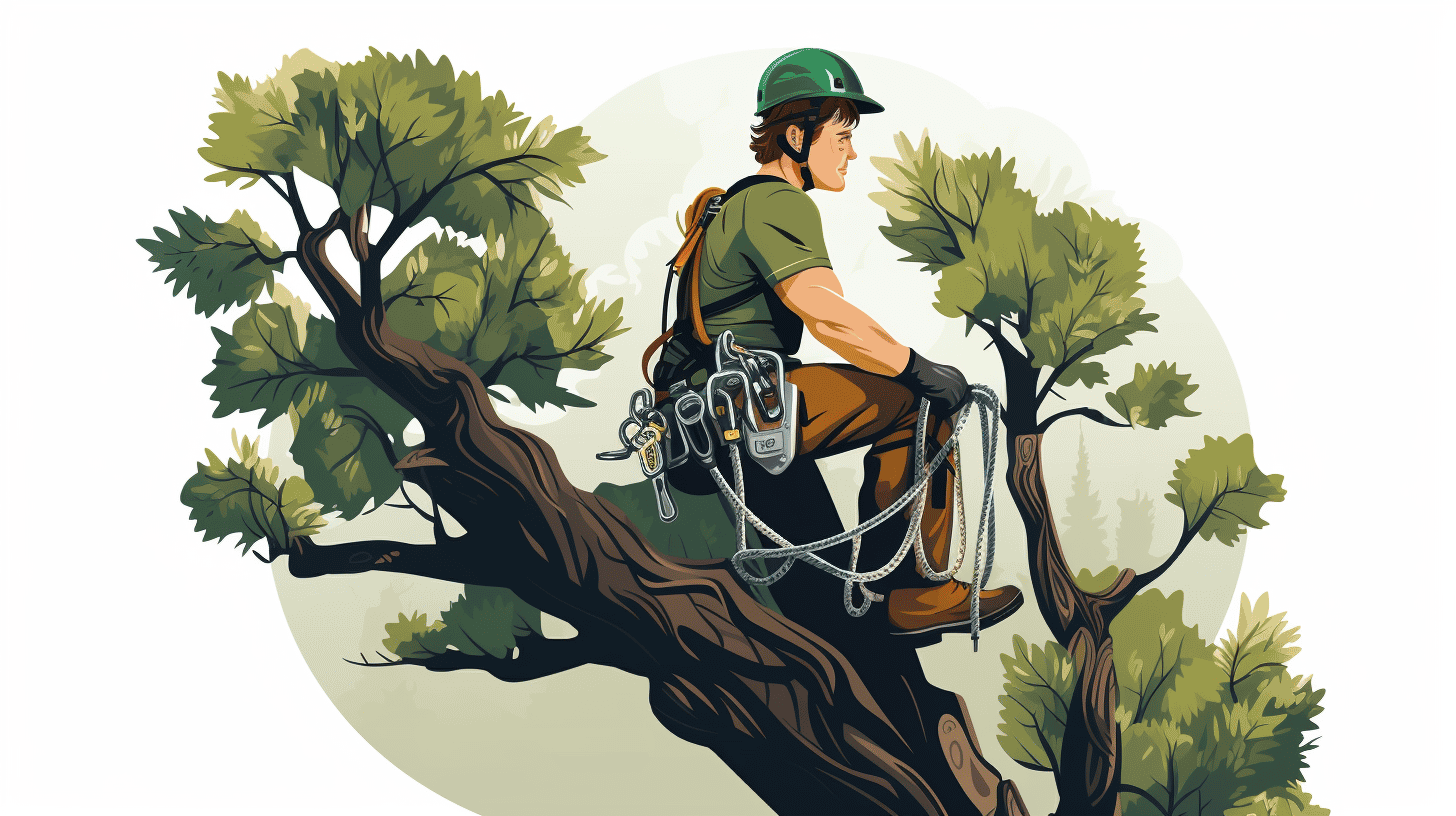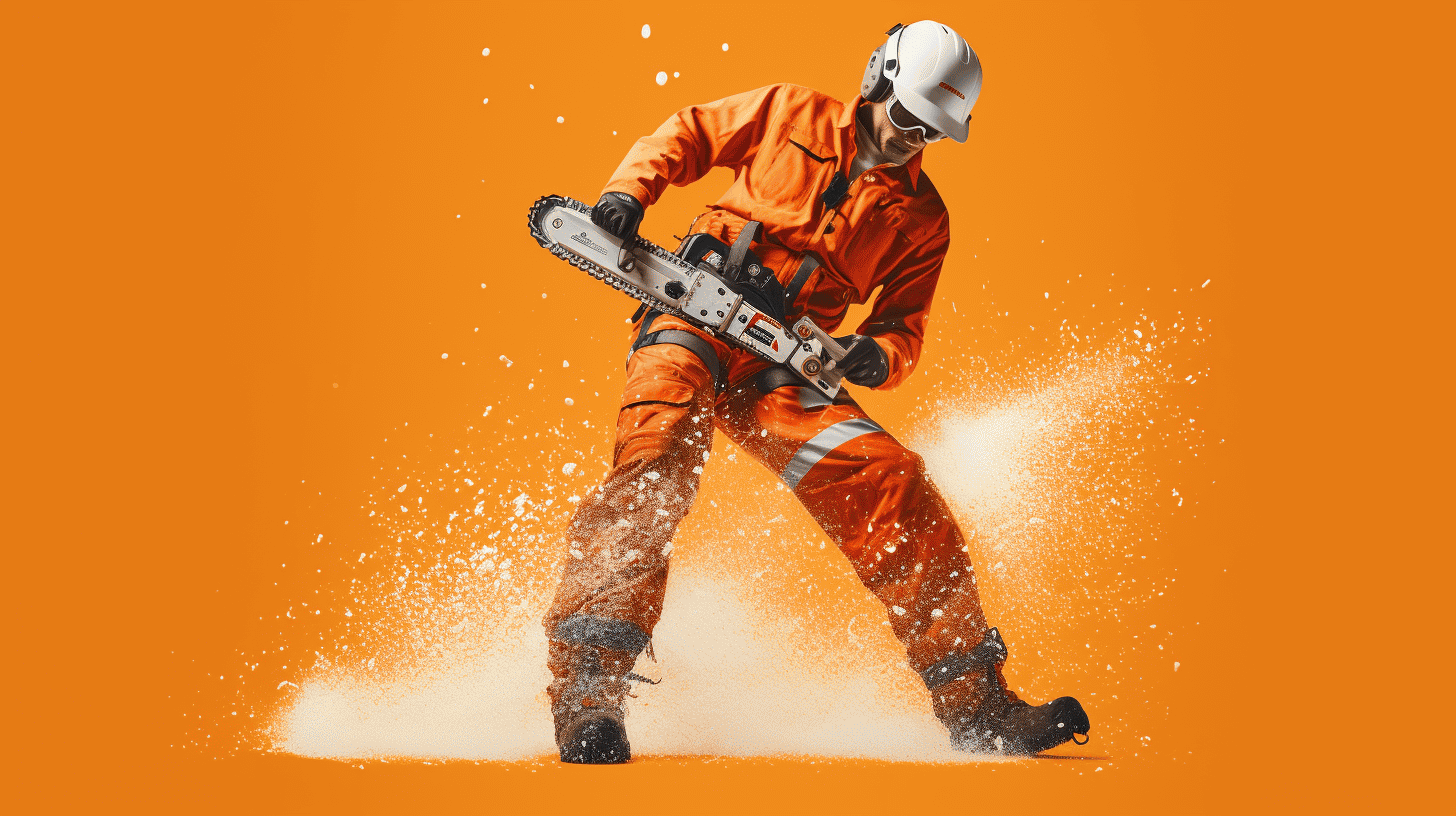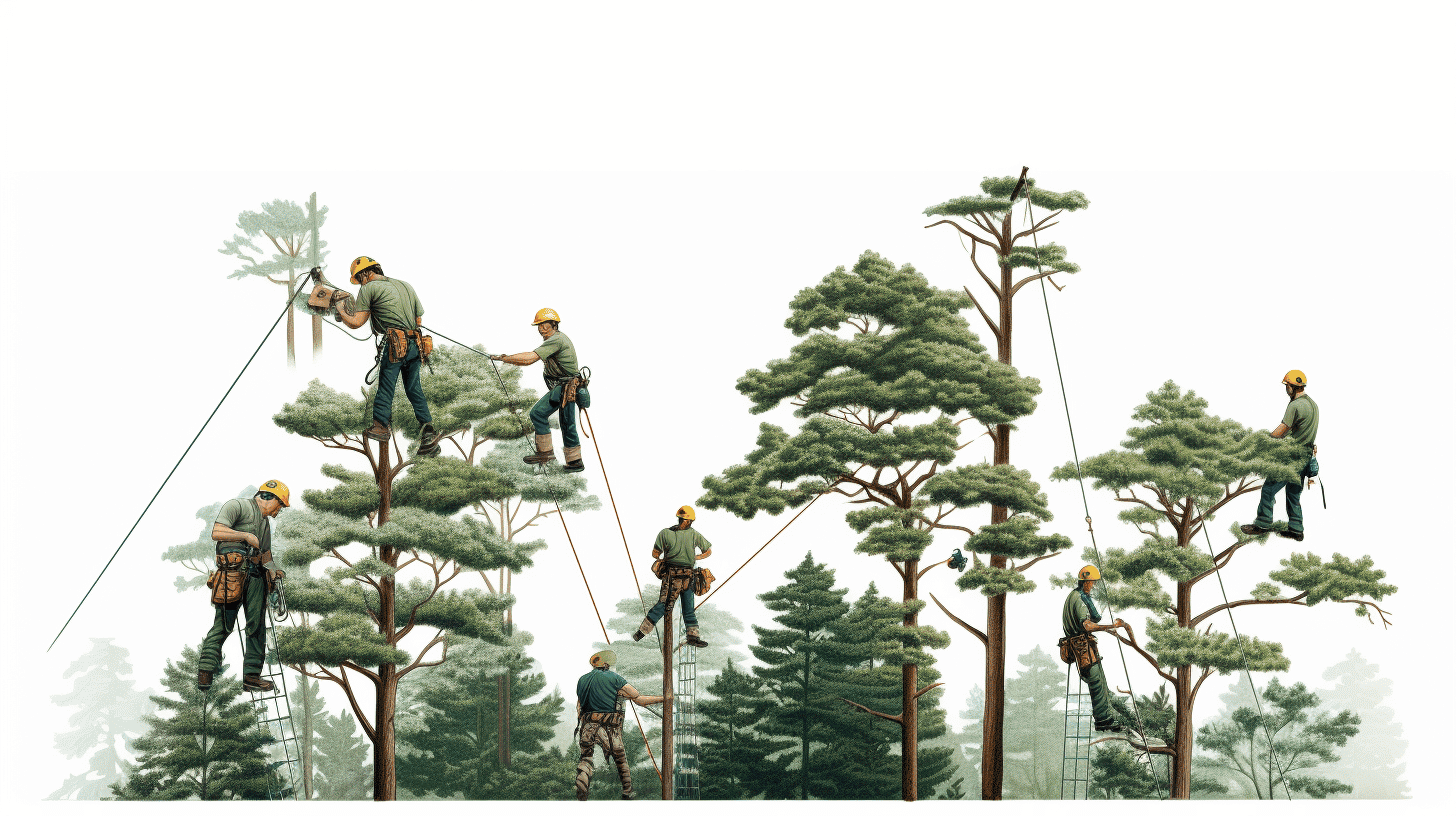For centuries, trees have been fundamental for both our environment and economy, offering resources for construction, shade for the summer, and stunning beauty to landscapes. However, taking care of these natural giants isn't an easy stroll in the park. A profession called 'arboriculture' has emerged, with experts named 'arborists' dedicated to maintaining and improving the health of trees. The profession doesn't come without risks, though. These tree care specialists often find themselves hanging hundreds of feet in the air, handling sharp implements, and dealing with large, unwieldy branches. Therefore, the impact of quality products on arborist safety is a crucial topic worth exploring. This article will delve into the world of arborists, the hazards they face, and the importance of high-quality gear in ensuring their safety and the sustainability of our much-loved trees. Let's embark on this enlightening journey to discover how safe tree care practices can literally save lives and enhance the health of our beautiful trees.
Hazards in Tree Care Industry
The tree care industry, while an essential player in urban development and environmental preservation, is often undervalued in terms of the hazards and risks that its workers face daily. Amongst all industries, the risk of fatality for tree workers is grossly unproportionate, being 15 times higher. There's a shocking non-fatal injury rate too, with 239 injuries reported per 10,000 workers. Let's delve into some of the major hazards that contribute to these alarming statistics and why they are of significant concern.
The Deadly Consequences of Chainsaw Injuries
To begin with, the tree care industry records an astounding number of chainsaw-related injuries annually. Not only are around 23,000 chainsaw injuries reported every year, but they also account for approximately 80 worker deaths. The high injury and fatality rates are due to the volumes of workers using chainsaws and the inherent risks associated with their usage.
Tree Trimming and Pruning Risks
Focus then trickles to tree trimmers and pruners, who are also on the frontline of risk exposure. With their tasks often compelling them to ascend steep heights amid unpredictable weather conditions, the fatality rates experienced are high. Between 1992 to 2007 alone, a significant toll of 1,285 worker deaths associated with tree care was reported.
Fatal Hazards in the Industry
Perhaps the most substantially incapacitating hazards that workers in the tree care industry face come from three sources:
- Overhead power lines: In a bid to prune or cut down trees, workers get precariously close to overhead power lines with fatal results.
- Falling branches: Tree workers are constantly under threat from branches falling unexpectedly, especially during cutting or pruning tasks.
- Faulty safety equipment: The integrity of safety equipment is pivotal in protecting tree workers. However, cases of such equipment failing to work as expected contribute significantly to the industry's fatality and injury rates.
Meticulous understanding and recognition of these potential hazards are imperative to safeguard the health and lives of workers in the tree care industry. Practical safety measures, frequent risk assessments and a responsive emergency strategy can significantly curtail these hazards, thus creating a safer environment for tree care professionals.
Importance of Arborist Safety Training
Working in the field of arboriculture, it's no secret that there's considerable risk involved. Whether an arborist is climbing high into the treetops, operating heavy machinery, or dealing with a variety of potentially dangerous wildlife, safety must always be the priority. One might wonder, how do these professionals ensure their safety in such challenging and unpredictable situations? The answer lies in arborist safety training, a crucial part of an arborist's qualification and ongoing professional development.
Safety training for arborists is designed to protect employees on the job, an endeavor that has proven to add major value to companies in this sector. Not only does this training prepare arborists to preemptively deal with potential risks, but it also instills confidence, which is essential for performing this demanding and often dangerous work successfully.
Now, let's delve into the key reasons why arborist safety training is so essential:
- Maintaining a safe working environment: In arboriculture, potentially dangerous situations are a common part of the job. Safety training teaches staff how to prepare for these situations, imparting essential knowledge about safety equipment, climbing techniques, and the correct operation of machinery.
- Regulation compliance: In many regions, safety training is a legal requirement for arborists, with stringent regulations in place to ensure worker safety. Compliance is not optional – it's a necessity.
- Mitigating potential threats: From the teaching of correct handling techniques to learning about the local wildlife, arborist safety training covers various threats that employees might face on the job, providing them with the required knowledge to deal with any situation confidently.
- Insurance purposes: When accidents do occur, having an established safety training program can sometimes expedite insurance claims, proving that preventative measures were followed.
To quote an old adage, "knowledge is power". When it comes to safety in the arboriculture industry, this statement rings especially true. Arborist safety training empowers employees with the knowledge and skills to safely navigate their work environment. As highlighted by the points above, this training is not merely recommended - it's pivotal for safety and success in the industry.
So, whether you're an arborist looking for essential safety training or an employer wanting to ensure that every precaution is taken for your team, the importance of arborist safety training cannot be overstated. In an industry where risks are inherent, safety training provides a firm foundation, ensuring every day on the job is as safe as it can possibly be.
Role of Certified Arborists
The task of maintaining your trees' health and longevity goes beyond regular watering and periodic trimming. It involves comprehensive inspection work which requires professional expertise - this is where certified arborists come into the picture. Understanding the importance of these experts brings us a step closer to ensuring our trees' longevity and maintaining the aesthetic appeal of our landscapes.
Firstly, certified arborists possess vast knowledge and employ scientific methods in the domain of tree conservation. Their technical prowess aids in a thorough examination of trees for signs of diseases or possible damage from pests.
- Regular Inspection: Acting like investigators, they conduct regular inspections to identify potential threats. Their role is critical to diagnose ailing trees and recommend the ideal treatment.
- Scientific Rigor: They adhere to a scientific approach in treating these issues, which usually involves a combination of biology, chemistry, and pathology.
Let's illuminate these points with a quote from a renowned arborist -
"A tree that looks healthy to an untrained eye might teeter on the brink of a terminal illness. Only a certified arborist can identify these silent threats."
Secondly, arborists have a pivotal role in enhancing curb appeal. Trees are intrinsic to the visual charm of your property, contributing significantly to its overall impression and potential market value.
- Health Enhancement: Certified arborists strategically prune trees for optimal health, enhancing their overall shape and foliage.
- Hazard Mitigation: They also identify any structural issues that may pose future risks and work meticulously to address them.
Hence, certified arborists encapsulate the proverb, "An ounce of prevention is worth a pound of cure." Their role not only ensures the preservation of your lovely trees but appears instrumental in creating beautiful landscapes that radiate visual appeal.
Importance and Impact of Quality Arborist Gear
The art and science of arboriculture, or tree care, is a professional endeavor demanding not only knowledge and skills but also a considerable amount of physical agility. As an arborist, you find yourself maneuvering through precarious positions whilst perched at dizzying heights. Therefore, having quality arborist gear is not merely a matter of preference; it's a paramount necessity ensuring your safety while performing this demanding job.
A core component of quality arborist gear is the climbing and rigging ropes. High-quality climbing and rigging ropes offer strength, maneuverability, and weighted design to keep the professional arborists securely positioned on the tree. These ropes differ markedly from those used in rock climbing or other height-related activities because they're purposefully designed to withstand the sharp shards of wooden bark, which can tear fiber materials to shreds, thus compromising the secured height and user's safety.
Aside from climbing ropes, arborists also heavily depend on other protective gear to ensure safety. Among those, 'Tree climbing helmets and accessories' are worth a particular mention. Helmets are literally lifesavers when it comes to preventing any potential head injuries caused by falling branches or debris. Additional accessories like Visors, ear muffs, and chin straps enhance safety and comfort; ultimately contributing to the elevated work efficiency of an arborist.
The Best Quality Products for Arborists can empower them with the much-needed peace of mind during their perilous daily routines. Embracing high-quality gear effectively safeguards arborists from the risk of avoidable accidents or injuries while allowing them to focus completely on their valuable work of preserving and protecting our vital tree resources.
In a nutshell, quality arborist gear underscores the intricate balance between safety, comfort, and work efficiency. Investing in top-grade gear isn't merely an expenditure, instead, it's an investment into an arborist's life, their professional reputation, and, ultimately, the wellbeing of our environment. Quality should never be compromised when it comes to personal safety - particularly for a job as hazardous and critical as that of an arborist.
The Role of Tree Services
Why is it that trees, the silent stalwarts of our urban landscapes, often get overlooked? It's a question that can baffle many, especially considering their vast contribution to our environment and overall quality of life. Tree services have a crucial role to play in this regard. These specialized service providers are akin to tree doctors who diagnose and treat different tree problems, ensuring they live longer, healthier lives.
The first and most obvious benefit of employing tree services involves prolonging tree life. It's not uncommon for trees to suffer from various diseases or pests that may not be visible to untrained eyes. Tree services can offer specialized treatments tailored to fight off these ailments, maintaining the health and vitality of our arboreal friends.
- Prolonged Tree Life: Tree services leverage their skills and knowledge to identify signs of disease, pest infestations, or other stress-creating issues in trees. They can conduct necessary treatments and provide regular tree maintenance to extend a tree's life.
- Preventing Damage and Disease: Tree professionals can detect potential problems before they become significant issues, mitigating risks of tree-inflicted property damage or large-scale disease spread.
- Tree Trimming and Pruning: Regular pruning and trimming by tree service professionals keep trees in optimal shape and health while preventing unnecessary and potentially harmful overgrowth.
In discussing the role of these services, it's essential to highlight the wider environmental benefits that result from optimum tree health. Proper care and maintenance of trees can dramatically improve air quality, acting as the world's lungs by absorbing carbon dioxide and releasing oxygen. In the age of rising pollution levels, this attribute becomes even more critical.
Furthermore, healthy and well-maintained trees play a key role in preventing soil erosion. Their strong root systems hold the soil in place, ensuring that heavy rains don't wash it away, thus mitigating the effects of natural disasters like floods.
And it doesn't stop there. From serving as home to diverse wildlife, providing shelter, and producing food, to enriching the ecosystem with nutrient-rich compost from fallen leaves, the role of trees in supporting life is manifold.
Knowing the importance of these benefits, hiring skilled arborists can prove indispensable in preventing tree damage and disease. These tree health specialists bring in extensive knowledge and experience in the principles of tree biology, enabling them to identify potential threats to tree well-being and take corrective action as needed.
The tree service industry heralds a commitment to ensuring that our urban forest giants are well cared for, playing a central role in fostering healthier, greener, and safer urban landscapes. So, next time you pass by a towering tree, remember that there's a team of experts investing in its well-being - the heroes of tree services.
Importance of Proper Tree Care Knowledge
The beauty and tranquility that well-maintained trees can bring to your front or backyard are simply irreplaceable. Behind the scenes, these green friends work tirelessly, providing shade, purifying the air, and even ramping up your property's value. Savvy homeowners know that essential to these perks is proper tree care knowledge—the cornerstone to nurturing these silent heroes of nature.
Armed with a basic understanding of proper tree care, homeowners can keep their trees healthy and thriving, ensuring that they continue to beautify landscapes and contribute to the overall well-being of the environment. Let's delve deeper into why every tree owner should have this knowledge under their hat.
- Preservation of Trees' Health and Longevity
- Environmental Contribution
- Safety Issues
Optimal tree care starts from the very moment you plant them. As a tree owner, understanding how to correctly cultivate them, providing sufficient water, appropriate sunlight, and nutritious soil can give your trees a head start to a healthier growth cycle. Correct pruning practices also contribute to your trees' longevity by stopping diseases from spreading and encouraging new growth.
Trees are environmental superheroes. They absorb carbon dioxide, release oxygen, and reduce soil erosion. When homeowners apply correct tree care principles, they're actively contributing to a healthier environment. They're effectively maintaining the trees' ability to filter air pollutants, produce oxygen, and offer a habitat to wildlife—making a direct, positive impact on our planet.
Lastly, but equally important, safety is another reason why you should know about proper tree care. Overgrown branches can present significant risks, such as falling limbs during storms, obstructed views for drivers, and easy access for pests to infiltrate homes. With proper trimming and preventive care, you can ensure a safer environment for both the tree and surrounding spaces.
While the benefits of acquiring proper tree care knowledge are immense, it's crucial to remember that every tree type has its unique care instructions. Therefore, seeking advice from local horticulturists or using online resources like our tree care guide can equip homeowners with the required knowledge for their specific tree types.
By valuing the importance of proper tree care knowledge, we contribute to healthier trees, safer environments, and, ultimately, a more sustainable world. So, it's time to roll up our sleeves, get our hands a bit dirty, and channel our inner arborists to take care of our leafy friends. With their roles in our ecosystems, they indeed deserve our best care.
Conclusion
In the broad spectrum of arboriculture practice, every aspect plays a crucial part, from having a deep understanding of tree biology, leveraging the expertise of certified arborists, to adhering to safety training protocols. However, the one element that bridges all these together is the use of quality arborist gear.
At Rain Gear Pro, we believe that our high-quality chainsaw safety pants can significantly mitigate the hazards of the tree care industry by providing unparalleled protection without compromising on comfort. They are an epitome of resilience, durability, and functionality, tailored to tackle the notorious issue of 'crotch blowouts' head-on!
Every arborist understands the inherent risks of their profession; hence, equipping them appropriately becomes our shared responsibility. By committing to use the finest industry materials for manufacturing and ensuring our products pass stringent quality controls, we aim to stand on the frontlines in the battle for arborist safety.
Next time when you step on the field, remember that Rain Gear Pro is with you, offering you their most reliable partner - the chainsaw safety pants. Ensure you are armored correctly, and let our gear take care of you while you care for the trees!
Remember, ensuring arborist safety isn't just about training or services, it's also heavily reliant on the tools you use. So, opt for the best and let the quality speak for itself. Walk with confidence, armed with safety, with Rain Gear Pro. For more details on our product range, visit us and explore the realm of safety gear designed for the best in the industry!
Frequently Asked Questions
-
Why is product quality important for arborist safety?
Product quality is important for arborist safety because high-quality tools and equipment are more reliable, durable, and less likely to malfunction or fail during use. This reduces the risk of accidents and ensures that arborists can perform their jobs safely.
-
What are some examples of high-quality products for arborist safety?
Some examples of high-quality products for arborist safety include: 1. Safety harnesses and lanyards with robust construction and secure fastenings, 2. Climbing ropes with high strength and abrasion resistance, 3. Chainsaw protective pants with reliable cut-resistant fabric, and 4. Helmets with impact-resistant shells and comfortable, adjustable straps.
-
How can using low-quality products affect arborist safety?
Using low-quality products can compromise arborist safety as they may be prone to breakage, have weak components, or lack proper safety features. This increases the likelihood of accidents, injuries, and equipment failures during tree care operations.
-
Is it worth investing in high-quality products for arborist safety?
Yes, it is worth investing in high-quality products for arborist safety. While they may come with a higher initial cost, they provide better performance, durability, and reliability, ultimately reducing the risk of accidents and ensuring the well-being of arborists.
-
What are some factors to consider when selecting high-quality products for arborist safety?
When selecting high-quality products for arborist safety, consider factors such as brand reputation, compliance with safety standards, positive customer reviews, material quality, product certifications, and warranties. Consulting with industry professionals and experts can also be helpful in making informed purchasing decisions.


















Leave a comment
This site is protected by hCaptcha and the hCaptcha Privacy Policy and Terms of Service apply.